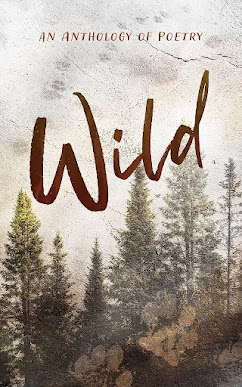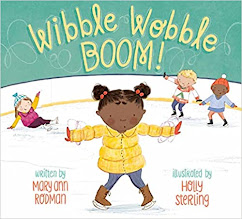Now you – and/or - your students - can write a Success Story, thanks to the Revision Tips our Monday Student Success Story Interviewee, children’s book author
Nancy J. Cavanaugh, shares in today’s Wednesday Writing Workout!
Thanks, Nancy, for introducing our readers to
ThePlot Whisperer, Martha Alderson.
And, Readers: if you haven't already done so, go to Monday's post to enter our
TeachingAuthors Book Giveaway to win an autographed copy of Nancy’s debut novel Ratchet (Sourcebooks/Jabberwocky).
Let’s hear it for that prefix “re”!
Esther Hershenhorn
* * * * * * *
My main character Ratchet knows a lot about engines,
and I know just a little bit too. The
way I learned about engines was by taking them apart. Taking something apart is a really great way
to learn how it works. It’s also a great
way to figure out what’s wrong with something when it doesn’t work. When you bring your car to a mechanic, you
don’t expect him to open the hood and just stare at the engine. You expect him to get out his tools and start
taking things apart. It’s really the
same way with writing. It’s called
revision, and it gets messy. When you
finish a draft, your first inclination is to love it and to think it’s
perfect. It feels so rewarding to have
that clean copy in your hands, and it looks so good! But, the reality is, if you want to make it
better and take it to the next level, it’s got to get messy all over
again.
 Martha Alderson’s Blockbuster Plots and The Plot Whisperer provide me a lot of direction when I am taking apart
a manuscript. In her books and DVDs,
Martha uses a plot planner and a scene tracker.
Very simply put, it’s a method of taking apart your story by listing
each scene. Putting your story into this
format allows you to get your head around the whole thing at one time. Listing your scenes this way enables you to
determine whether each scene works within itself and to determine whether each
scene works within the overall plot. Taking
apart your manuscript his way also helps you clarify which parts of the overall
plot are not working or what parts are missing altogether. (Martha’s books and DVDs give detailed
instructions on how to create the scene tracker and plot planner. Check out Martha’s website to learn more.
Martha Alderson’s Blockbuster Plots and The Plot Whisperer provide me a lot of direction when I am taking apart
a manuscript. In her books and DVDs,
Martha uses a plot planner and a scene tracker.
Very simply put, it’s a method of taking apart your story by listing
each scene. Putting your story into this
format allows you to get your head around the whole thing at one time. Listing your scenes this way enables you to
determine whether each scene works within itself and to determine whether each
scene works within the overall plot. Taking
apart your manuscript his way also helps you clarify which parts of the overall
plot are not working or what parts are missing altogether. (Martha’s books and DVDs give detailed
instructions on how to create the scene tracker and plot planner. Check out Martha’s website to learn more.
At first, Martha’s method seemed much too tedious
and time consuming. I didn’t want to take
apart my manuscript piece by piece after I had worked so hard to write it, but
when I finally got tired of my story not working, I decided to give it a
try. I did my own version of Martha’s
scene tracker and plot planner, but I used her basic format to find what was
missing in my plot and make my story stronger.
It took a lot of work, a lot of time, and made a big mess of my
manuscript; but if I hadn’t taken things apart in this way, I never would’ve
been able to see what was really wrong with my story and why it wasn’t
working.
My advice? Find
a revision method that works for you, and take the time to do it because when
it comes to revision there really are no shortcuts. Taking apart your story is necessary, and
that takes time and gets messy, but when you put in the time and clean up the
mess, your story will run like a race car.
# # #
 Martha Alderson’s Blockbuster Plots and The Plot Whisperer provide me a lot of direction when I am taking apart
a manuscript. In her books and DVDs,
Martha uses a plot planner and a scene tracker.
Very simply put, it’s a method of taking apart your story by listing
each scene. Putting your story into this
format allows you to get your head around the whole thing at one time. Listing your scenes this way enables you to
determine whether each scene works within itself and to determine whether each
scene works within the overall plot. Taking
apart your manuscript his way also helps you clarify which parts of the overall
plot are not working or what parts are missing altogether. (Martha’s books and DVDs give detailed
instructions on how to create the scene tracker and plot planner. Check out Martha’s website to learn more.
Martha Alderson’s Blockbuster Plots and The Plot Whisperer provide me a lot of direction when I am taking apart
a manuscript. In her books and DVDs,
Martha uses a plot planner and a scene tracker.
Very simply put, it’s a method of taking apart your story by listing
each scene. Putting your story into this
format allows you to get your head around the whole thing at one time. Listing your scenes this way enables you to
determine whether each scene works within itself and to determine whether each
scene works within the overall plot. Taking
apart your manuscript his way also helps you clarify which parts of the overall
plot are not working or what parts are missing altogether. (Martha’s books and DVDs give detailed
instructions on how to create the scene tracker and plot planner. Check out Martha’s website to learn more. 











6 comments:
Thanks for this, Nancy. Part of the reason I recently purchased Scrivener was to make it easier to create my own version of a "scene tracker." Still in the learning stage, but I think it will help.
Oh How I wish you weren't right. I think it's time for me to do this.
Thanks for the tip.
Ok you list each scene with each chapter and the you do what? Apply what criteria?
i AM ASSUMING YOU go to what your character wants and/or what your character needs and assess each scene to see if it forwards on or the other of these two things.
That would be part of it. I hate to buy another book, Maybe I can get the scene analyzer another way. (Sigh) I'll reread Save the Cat and try Googling plot/scene analyser.
Hi Susan, thanks for your question! I guess for me the process itself of listing the scenes helps me to see things about my story that I am not able to see when it's all put together. So my personal method isn't so much about doing something with each scene itself but rather using the list of scenes as a way to see the whole story at once. Sometimes I type my scene list in columns in very cryptic language. Other times I use a big white board and list the scenes on it using dry erase markers. Other times I tape the scenes to a plot line. Each of these ways does the same thing for me, allows me to step back and look at the story as a whole. Are there enough scenes in the beginning? Is there a turning point in the right place? Does the tension and conflict rise and fall in the right places? And so on. I hope that helps!
Nancy
Hi Susan, you can see a blank scene tracker worksheet here:
http://www.blockbusterplots.com/resc/ST.html
Also Becky Levine talks about how she uses it here:
http://beckylevine.com/2009/05/22/keeping-an-eye-on-the-carrot/
And I totally understand about not wanting to buy another book on craft--I have shelves filled with them. I've just requested Plot Whisperer through my library. :-)
Thanks Carmela and Nancy. I copied your replies and links into a document I made for myself on revision techniques. I truly appreciate your answers.
Post a Comment